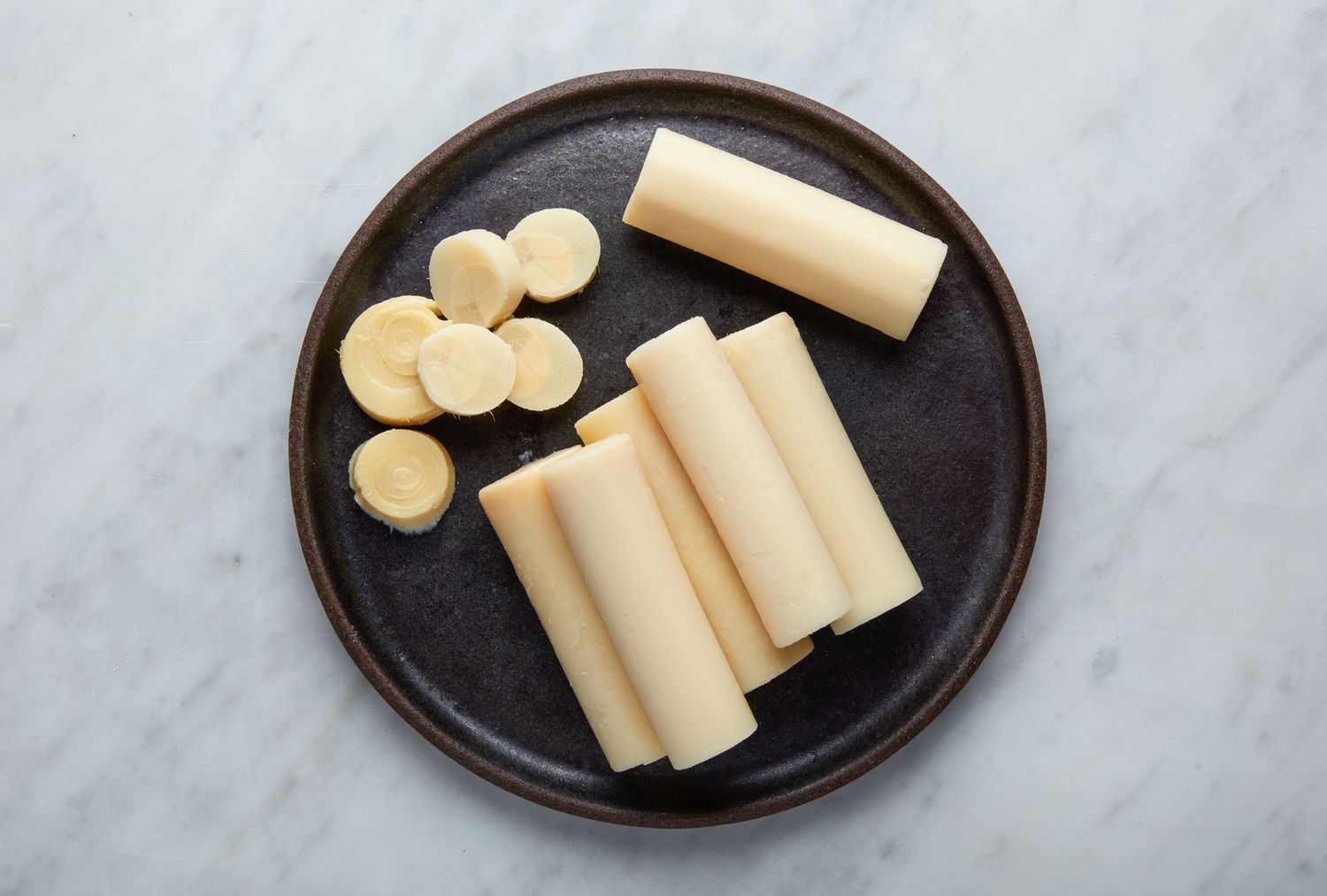
Palm heart, also known as heart of palm, is a unique vegetable harvested from the inner core of certain palm trees. This delicacy has a mild flavor and a tender texture, making it a favorite in salads, soups, and gourmet dishes. But what makes palm heart so special? It's packed with nutrients, including fiber, protein, and essential vitamins. Plus, it's low in calories, making it a healthy addition to any diet. Sustainability is key when it comes to harvesting palm hearts, as over-harvesting can harm palm tree populations. Ethical farming practices ensure that this tasty treat remains available without damaging the environment. Ready to learn more? Let's dive into 20 fascinating facts about palm heart!
Key Takeaways:
- Palm heart, also known as heart of palm, is a delicious and nutritious vegetable harvested from certain palm trees. It's low in calories, high in fiber, and packed with essential vitamins and minerals, making it a great addition to healthy diets.
- Harvesting palm heart is a labor-intensive process, involving cutting down entire palm trees. However, sustainable farming practices are now being adopted to ensure its availability without causing deforestation. So, enjoy palm heart guilt-free!
What is Palm Heart?
Palm heart, also known as heart of palm, is a vegetable harvested from the inner core of certain palm trees. This delicacy is often used in salads, soups, and other dishes. Here are some intriguing facts about palm heart.
-
Palm heart is primarily harvested from the peach palm, acai palm, and palmetto palm trees.
-
The vegetable is known for its tender texture and mild flavor, making it a versatile ingredient in various cuisines.
-
Palm heart is often referred to as "millionaire's salad" due to its high cost and labor-intensive harvesting process.
Nutritional Benefits of Palm Heart
Palm heart is not just tasty; it's also packed with nutrients. Let's explore some of its health benefits.
-
Palm heart is low in calories, making it a great addition to weight-loss diets.
-
It is rich in dietary fiber, which aids in digestion and helps maintain a healthy gut.
-
The vegetable is a good source of vitamins A and C, which are essential for immune function and skin health.
-
Palm heart contains important minerals like potassium, which helps regulate blood pressure.
How Palm Heart is Harvested
The process of harvesting palm heart is quite fascinating and labor-intensive. Here are some details about how it's done.
-
Harvesting palm heart involves cutting down the entire palm tree, which is why it's considered a luxury item.
-
The inner core of the tree is carefully extracted to obtain the tender palm heart.
-
Sustainable farming practices are now being adopted to ensure that palm heart harvesting does not lead to deforestation.
Culinary Uses of Palm Heart
Palm heart is a versatile ingredient that can be used in various dishes. Here are some popular culinary uses.
-
Palm heart is often used in salads, adding a crunchy texture and mild flavor.
-
It can be marinated and grilled, making a delicious side dish or appetizer.
-
The vegetable is also used in soups and stews, where it absorbs the flavors of the broth.
-
In some cuisines, palm heart is pickled and served as a condiment.
Interesting Facts About Palm Heart
There are many lesser-known facts about palm heart that make it even more interesting. Let's take a look.
-
Palm heart has been consumed for centuries by indigenous peoples in South America.
-
The vegetable is sometimes called "swamp cabbage" in the southern United States.
-
Palm heart is often used as a meat substitute in vegetarian and vegan dishes due to its texture.
-
The canned version of palm heart is widely available and can be a convenient option for home cooks.
-
Fresh palm heart is highly perishable and should be consumed within a few days of harvesting.
-
The vegetable is not only delicious but also environmentally friendly when harvested sustainably.
Final Thoughts on Palm Heart
Palm heart, often called the "vegetable ivory," is a unique and nutritious ingredient. It comes from the inner core of certain palm trees and is packed with vitamins and minerals. This delicacy is not just tasty but also versatile, fitting into salads, soups, and even gourmet dishes. Harvesting palm heart sustainably is crucial to prevent deforestation and ensure the longevity of palm species. While it might be a bit pricey due to its labor-intensive harvesting process, the health benefits and culinary possibilities make it worth trying. Whether you're a food enthusiast or just curious about new ingredients, palm heart offers a delightful addition to your diet. So next time you're at the grocery store or dining out, consider giving this exotic treat a chance. Your taste buds and body will thank you!
Frequently Asked Questions
Was this page helpful?
Our commitment to delivering trustworthy and engaging content is at the heart of what we do. Each fact on our site is contributed by real users like you, bringing a wealth of diverse insights and information. To ensure the highest standards of accuracy and reliability, our dedicated editors meticulously review each submission. This process guarantees that the facts we share are not only fascinating but also credible. Trust in our commitment to quality and authenticity as you explore and learn with us.


